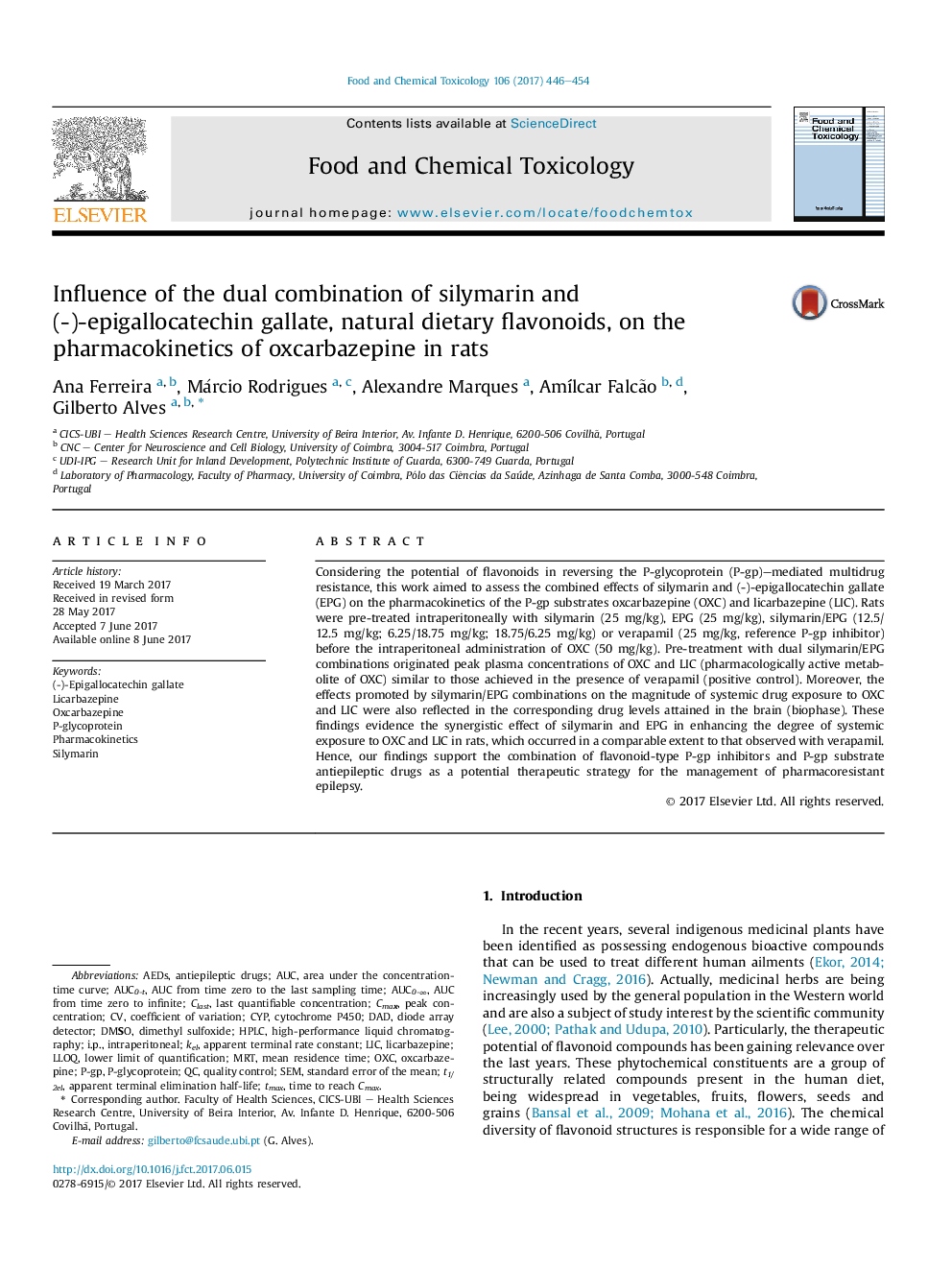| Article ID | Journal | Published Year | Pages | File Type |
|---|---|---|---|---|
| 5560142 | Food and Chemical Toxicology | 2017 | 9 Pages |
â¢Natural dietary flavonoids silymarin and (-)-epigallocatechin gallate as in vivo P-gp inhibitors.â¢Flavonoids as reversing agents of the pharmacoresistance in epilepsy.â¢Pre-administration of flavonoid combinations significantly increased the Cmax of oxcarbazepine.
Considering the potential of flavonoids in reversing the P-glycoprotein (P-gp)-mediated multidrug resistance, this work aimed to assess the combined effects of silymarin and (-)-epigallocatechin gallate (EPG) on the pharmacokinetics of the P-gp substrates oxcarbazepine (OXC) and licarbazepine (LIC). Rats were pre-treated intraperitoneally with silymarin (25Â mg/kg), EPG (25Â mg/kg), silymarin/EPG (12.5/12.5Â mg/kg; 6.25/18.75Â mg/kg; 18.75/6.25Â mg/kg) or verapamil (25Â mg/kg, reference P-gp inhibitor) before the intraperitoneal administration of OXC (50Â mg/kg). Pre-treatment with dual silymarin/EPG combinations originated peak plasma concentrations of OXC and LIC (pharmacologically active metabolite of OXC) similar to those achieved in the presence of verapamil (positive control). Moreover, the effects promoted by silymarin/EPG combinations on the magnitude of systemic drug exposure to OXC and LIC were also reflected in the corresponding drug levels attained in the brain (biophase). These findings evidence the synergistic effect of silymarin and EPG in enhancing the degree of systemic exposure to OXC and LIC in rats, which occurred in a comparable extent to that observed with verapamil. Hence, our findings support the combination of flavonoid-type P-gp inhibitors and P-gp substrate antiepileptic drugs as a potential therapeutic strategy for the management of pharmacoresistant epilepsy.
Graphical abstractDownload high-res image (101KB)Download full-size image
